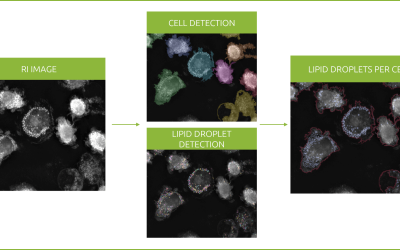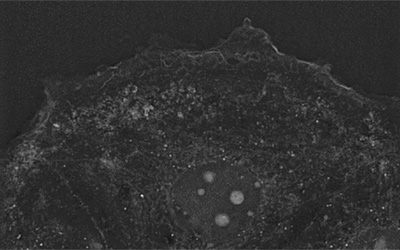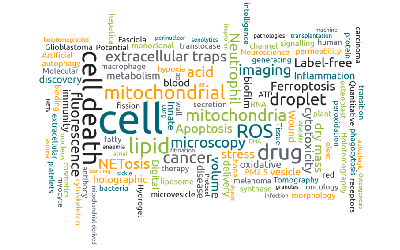In this unique label-free footage obtained from a demo at the Infection and Immunity lab of the UMC in Utrecht, a culture of neutrophils can be seen phagocyting pneumonia bacteria. An image was obtained every 1.9s for 4 minutes and 45 seconds. We can clearly distinguish the different structures of the neutrophils, from their multi-lobulated nucleus to the phagosomes formed as a result of the phagocytic process.
Feeling inspired? Request a quote or demo >
Pneumonia is an acute respiratory infection of either one or both lungs [1]. It is primarily caused by bacteria or viruses, although it can be caused by fungi and parasites as well.
Commonly isolated bacteria causing pneumonia are Streptococcus pneumoniae, Hemophilus influenzae, Chlamydophila pneumoniae and Mycoplasma pneumoniae [2]. Only S. pneumoniae is responsible for nearly 50% of cases [2].
Viral pneumonia, on the other hand, is frequently caused by rhinoviruses, coronaviruses, influenza virus, respiratory syncytial virus, adenovirus and parainfluenza[3,4]. Recently, an outbreak of SARS coronavirus 2, a new virus that can progress to pneumonia in infected individuals and that is conventionally known as COVID-19, has been declared a Public Health Emergency of International Concern by the WHO[5].
The immune mechanisms involved in pneumonia infections differs depending on the etiology of the disease. While in viral infections, mononuclear cells are the cellular type frequently linked to the inflammation[6], in bacterial infections neutrophils are key to the progression of the illness[7].
Neutrophils are granulocytes that have a characteristic multilobed nucleus, usually ranging from 3 to 5 interconnected lobes[8]. They combat pathogens in a non-specific way, as they take part in innate immune system[7]. After neutrophils migrate toward sites of infection or inflammation via chemotaxis, they help amplify inflammatory reactions by recruiting and activating other cells of the immune system and attack micro-organisms by phagocytosis, degranulation or neutrophil extracellular traps[9].
Discover more host-pathogen interaction videos on our dedicated page: Host-Pathogen Interactions >
[1] World Health Organization (2019, 2 August). Fact sheets: Pneumonia.
[2] Sharma S, Maycher B, Eschun G (May 2007). “Radiological imaging in pneumonia: recent innovations”. Current Opinion in Pulmonary Medicine. 13 (3): 159–69.
[3] Ruuskanen O, Lahti E, Jennings LC, Murdoch DR (April 2011). “Viral pneumonia”. Lancet. 377 (9773): 1264–75
[4] Figueiredo LT (September 2009). “Viral pneumonia: epidemiological, clinical, pathophysiological and therapeutic aspects”. Jornal Brasileiro de Pneumologia. 35 (9): 899–906
[5] World Health Organization (2020, 3 March). Rolling updates on coronavirus disease (COVID-19).
[6] Fleisher, Gary R.; Ludwig, Stephen, eds. (2010). Textbook of pediatric emergency medicine (6th ed.). Philadelphia: Wolters Kluwer/Lippincott Williams & Wilkins Health. p. 914
[7] Balamayooran, G., Batra, S., Fessler, M. B., Happel, K. I., & Jeyaseelan, S. (2010). Mechanisms of neutrophil accumulation in the lungs against bacteria. American journal of respiratory cell and molecular biology, 43(1), 5–16. https://doi.org/10.1165/rcmb.2009-0047TR
[8] Veda, P. (2011). Why are Neutrophils Polymorphonuclear? European Journal of Inflammation, 85–93.
[9] Selders, G. S., Fetz, A. E., Radic, M. Z., & Bowlin, G. L. (2017). An overview of the role of neutrophils in innate immunity, inflammation and host-biomaterial integration. Regenerative biomaterials, 4(1), 55–68. https://doi.org/10.1093/rb/rbw041
Read our latest news
Revolutionizing lipid droplet analysis: insights from Nanolive’s Smart Lipid Droplet Assay Application Note
Introducing the Smart Lipid Droplet Assay: A breakthrough in label-free lipid droplet analysis Discover the power of Nanolive's Smart Lipid Droplet Assay (SLDA), the first smart digital assay to provide a push-button solution for analyzing lipid droplet dynamics,...
Food additives and gut health: new research from the University of Sydney
The team of Professor Wojciech Chrzanowski in the Sydney Pharmacy School at the University of Sydney have published their findings on the toxic effect of titanium nanoparticles found in food. The paper “Impact of nano-titanium dioxide extracted from food products on...
2023 scientific publications roundup
2023 has been a record year for clients using the Nanolive system in their scientific publications. The number of peer-reviewed publications has continued to increase, and there has been a real growth in groups publishing pre-prints to give a preview of their work....
Nanolive microscopes
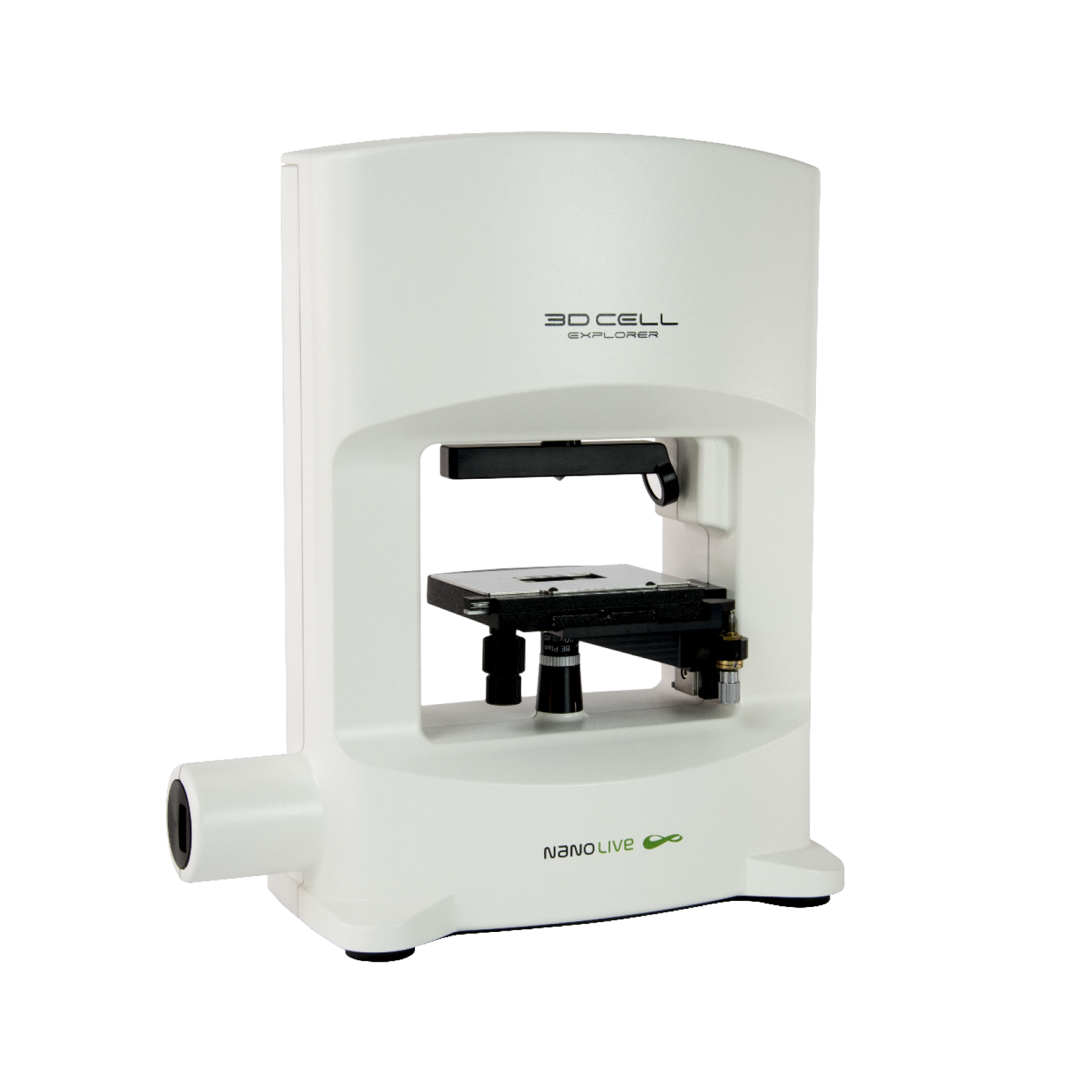
3D CELL EXPLORER
Budget-friendly, easy-to-use, compact solution for high quality non-invasive 4D live cell imaging
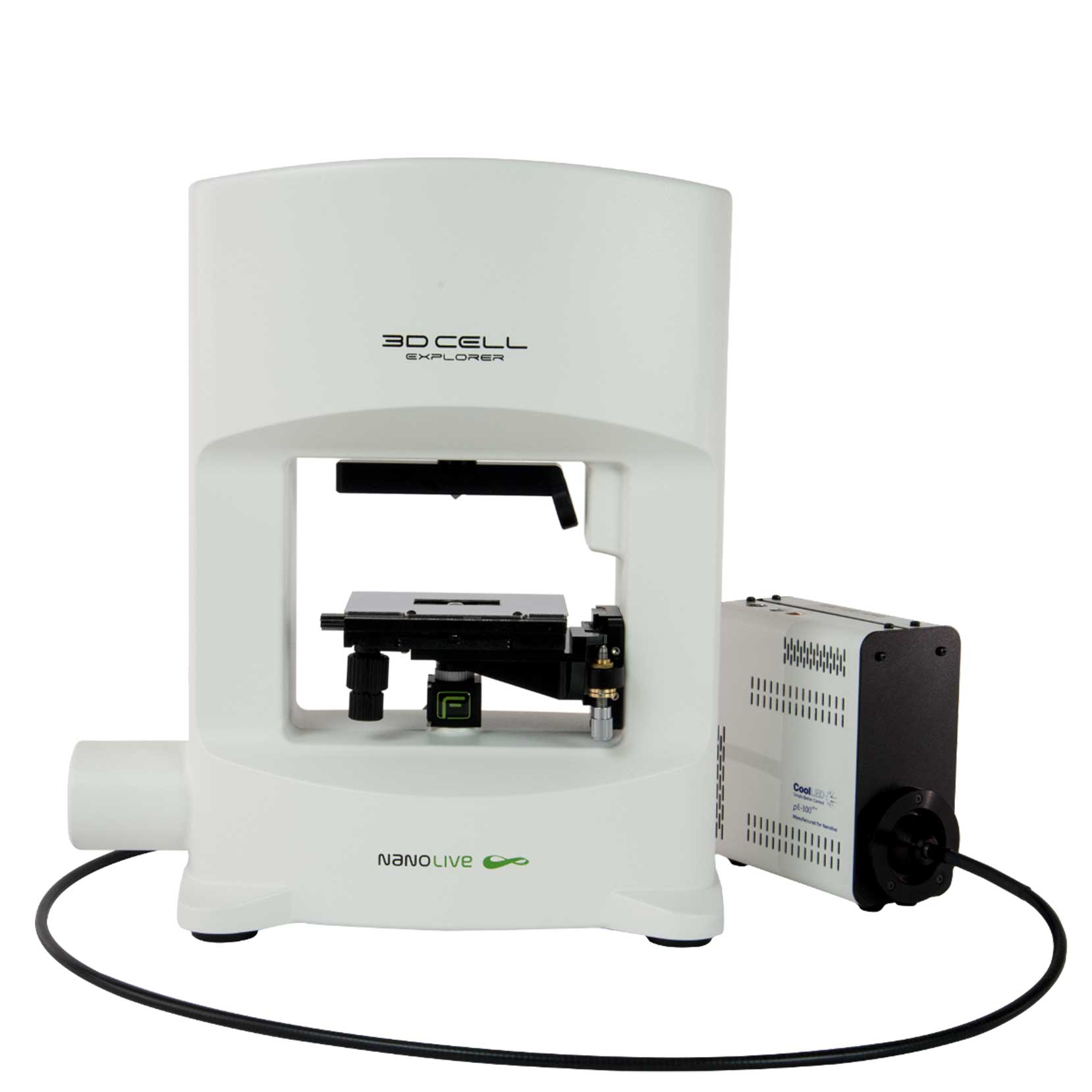
3D CELL EXPLORER-fluo
Multimodal Complete Solution: combine high quality non-invasive 4D live cell imaging with fluorescence

CX-A
Automated live cell imaging: a unique walk-away solution for long-term live cell imaging of single cells and cell populations

